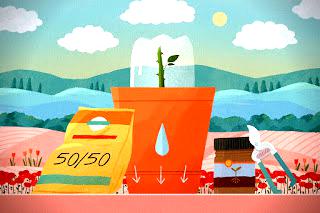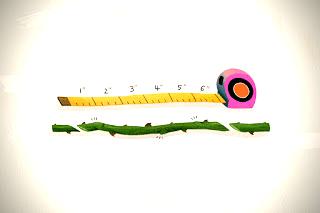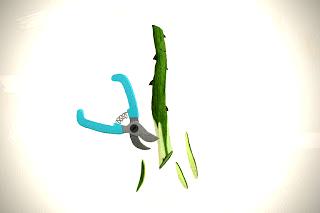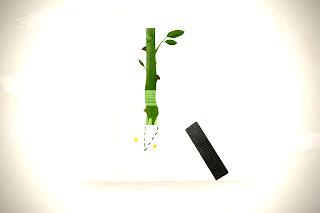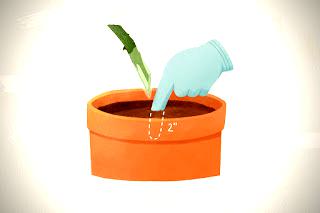How to Grow Roses from Cuttings in 10 Simple Steps
With a few stems of your favorite varieties and some inexpensive household items, you can grow new rose plants for your garden.
There's an open secret about roses: Not only are they easy to propagate, but making more of these plants is one of the best, most magical parts of having them around. You can sprout seeds, but growing roses from cuttings is the easiest way to reproduce your favorite varieties. There are several practical reasons for propagating roses from cuttings. If you have a cultivar that does particularly well in your garden, taking a few cuttings from that rose provides an inexpensive way to increase your collection. Or you may want to create backups of a rare variety or family heirloom rose. Home grown rose cuttings are also great for bartering with other gardeners. Here's how to successfully grow roses from cuttings, broken down into 10 simple steps.
What you will need:
Sharp pruner, scissors or knife. Disinfect with rubbing alcohol or Lysol.
A 50/50 mix of perlite and potting soil. The mixture should be sterile and hold roughly equal amounts of air and moisture.
Rooting hormone. This powder increases your chances of success, but most of the time it is not necessary. Damasks should always be used on hard-to-root rose types such as Hybrid Teas, old wood or winter cuttings.
A 2.5 to 5 inch deep container that drains well. This can be as simple as the bottom of a plastic milk jug with holes in the bottom .
A transparent cover to keep moisture around the cuttings. You can use the top of that milk jug or a 2-liter soda bottle with the bottom removed. A clean dry cleaning bag supported with stakes around the pot also works well.
Best Time for Rose Cuttings You
can successfully root rose cuttings any time of the year. But check the weather forecast for more consistent results. Plan to make your cut when daytime temperatures are above 55°F and below 90; The ideal is between 70 and 80. This will likely happen in the spring and fall. It is also best to take the cuttings early in the morning.
10 Steps to Growing Roses from Cuttings
In general, growing roses from cuttings is a simple process. When you prune your rose plants or cut off the wilted flowers, the balance of hormones in the removed stem changes. Under the right conditions, changes encourage it to take root. The resulting plant is the same as the parent.
1. Water the day before.
Healthy, well-moistened roses root better. In addition to making sure you keep the mother plants in good condition throughout the growing season, water them the day before you cut them.
2. Take the cuttings.
Select the stems just below the flower buds that are about to open. The second best option is the stems below the flowers that are starting to shed their petals. Aim for cuttings 4 to 8 inches long with three to five nodes (at regular intervals where buds, leaves and stems emerge). The cut at the base should be about a quarter inch below a knot and the cut at the top should be about a quarter inch above a knot.
Bonus tip: Heelwood is usually easier to root. It is found at the base of one stem, where it emerges from another stem. Try pulling your stem straight out from where it attaches. Or gently cut off the old shoot with a sharp knife.
3. Put the cuttings in water.
Place your cuttings immediately in a container of water out of direct sunlight. Or wrap the cuttings in damp paper towels and place them in a cooler. You want to keep the cut stems as juicy as possible.
4. Slice off the lower end of the cuttings.
Rooting is part of the wound response for roses. Encourage further rooting by vertically slicing the green bark on the bottom inch of the cutting. Do this two to four times at roughly equal intervals. Or you can gently scrape one or two strips of green skin from the bottom inch (do not completely remove the skin around the trunk). If the variety has large spines, plucking them at the base will also injure the stem enough to encourage the roots to develop.
5. Dip the cuttings in rooting hormone.
If you are using rooting hormone, apply it to about two inches of the base of your cuttings. Steps 1-4 are even more important if you're trying to grow roses from cuttings without rooting hormones.
6. Remove flowers and most leaves.
Cut off the flower bud or the finished flower and all but the top leaf or two. Reduce the upper leaves to a total of three or four leaflets. Slice the bud from the lowest node to encourage root growth.
7. Place the cuttings in the potting soil.
Stick your rose cuttings into about two inches of potting mix. Press the mixture around the stem and water thoroughly. Then add your moisture cover and place the pot in a location with indirect sunlight. This can be on a covered patio, next to a shed, or under trees. Some people prefer to root rose cuttings indoors on a shaded windowsill.
8. Check the cuts periodically.
If your moisture cover doesn't have vents, briefly lift it a few times a week. You don't need to add more water if the potting mix doesn't seem to have dried completely. Each time you remove the cover, check for cuttings that have turned brown to the base and remove them along with any fallen leaves.
9. Remove the moisture cover.
Rooting can happen in a few weeks, but expect it to take a month or two. Once you start to see roots and new leaf growth from the rim or bottom of the pot, you can begin acclimating the new roses outside of the moisture cover. If you have rooted several of them in one pot, you should carefully plant them in separate pots.
10. Plant rooted cuttings in the garden.
Give your rooted roses 9 to 12 months to develop enough to plant in your garden. During this time, you may want to move to a slightly larger pot with a 20/80 perlite mix and slow-release compost potting soil to allow for new growth.
Tips for Reproducing Roses from Cuttings
Growing roses from cuttings may sound complicated, but keep in mind that these are just guidelines for getting more consistent results. It is possible to stick a rose branch directly into your soil and find that it comes back months later and takes root. Or maybe if you wrap the cuttings in damp paper towels and leave them in a cooler on the 4th of July, like I once did, you might find a few still alive and rooting for Labor Day. Humans have successfully rooted a 5-foot-long cane, a 1-inch cutting, and non-ideal wood in the heat of summer and mid-winter.
You can also add more tools as you go into the process. For example, using fluorescent lights, heat mats, and mycorrhizal fungi can increase your success. But there are some popular rose rooting tips that you should be skeptical of.
Can you grow roses from commercial cut flowers?
Maybe if you source it from a local flower farm that offers same-day cut roses. It's not ideal, but you can always try. However, roses specially grown for sale as cut flowers are less likely to grow better on their own roots (they are usually grafted onto stronger roots) , so even if you manage to root these cuttings, the resulting plants may not do well. joyful.
Another thing to keep in mind is that many commercial cut roses(as well as newer rose varieties) . These patents last for 20 years, so these roses cannot be legally reproduced during this time without a license. Still, the overwhelming majority of roses are legal to root. Many of the older cultivars actually depend on gardeners to preserve them by propagating and sharing. If you are interested in preserving historic roses, rooting them can be a great way to join rose communities and historic sites in your area.
Can you grow roses from cuttings using potatoes?
There is a long-held theory that potatoes are the ultimate rose rooting medium. It's tempting to believe that all you have to do is poke a little hole in a porridge, maybe add some honey and cinnamon and stick it on your rose cut and go. But keep a few things in mind: potato tubers are actually alive. They have their own mix of plant hormones and immune defenses. And at least one academic study has found that potatoes have a 100 percent failure rate as a rose rooting medium.
Can you grow roses from cuttings in water?
Another old theory suggests that roses root easily in water. They can start the rooting process in water, but it won't go anywhere. There may be exceptions, so you can always try and see if you have any luck. But expect the best results by following the guidelines above.
